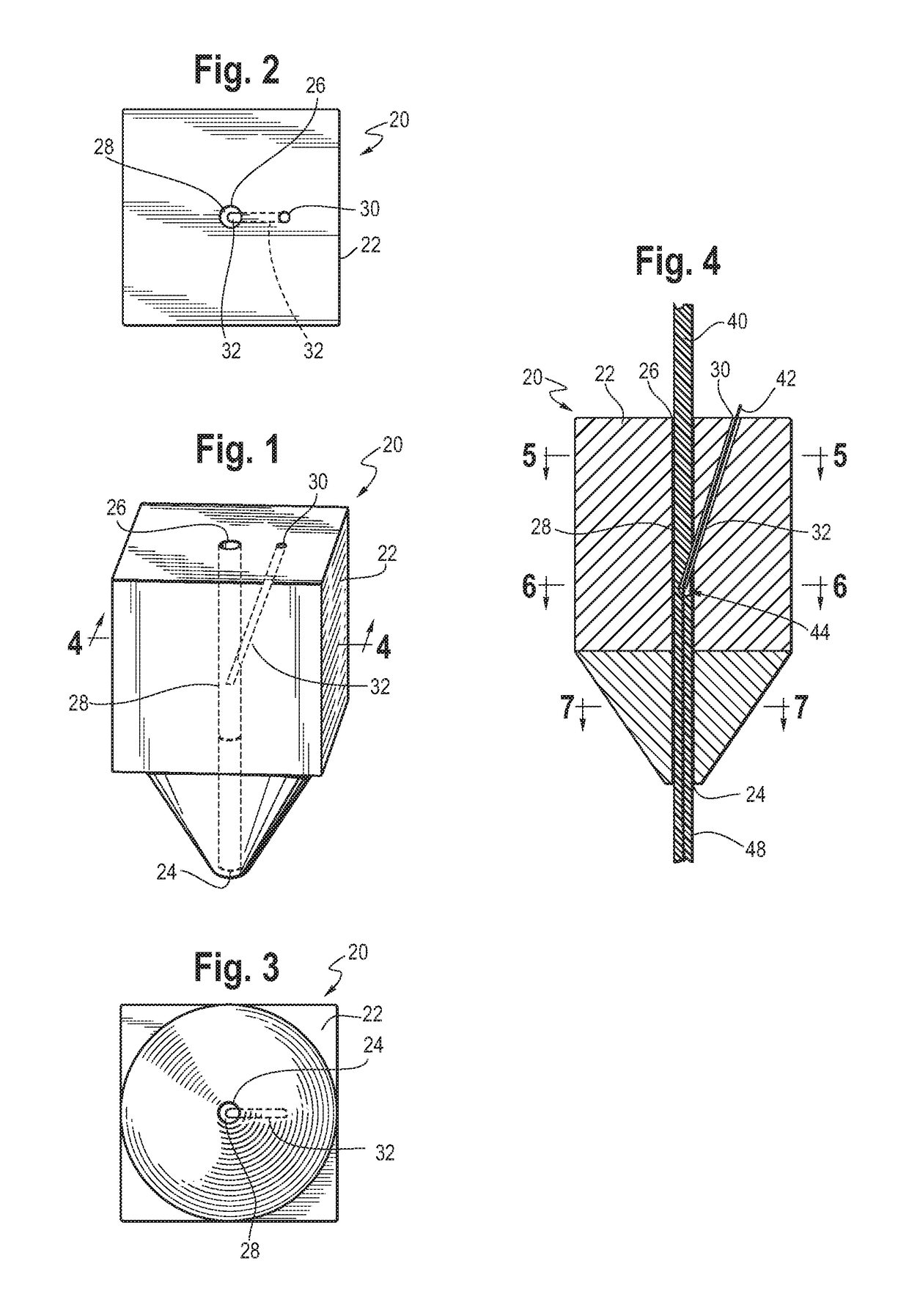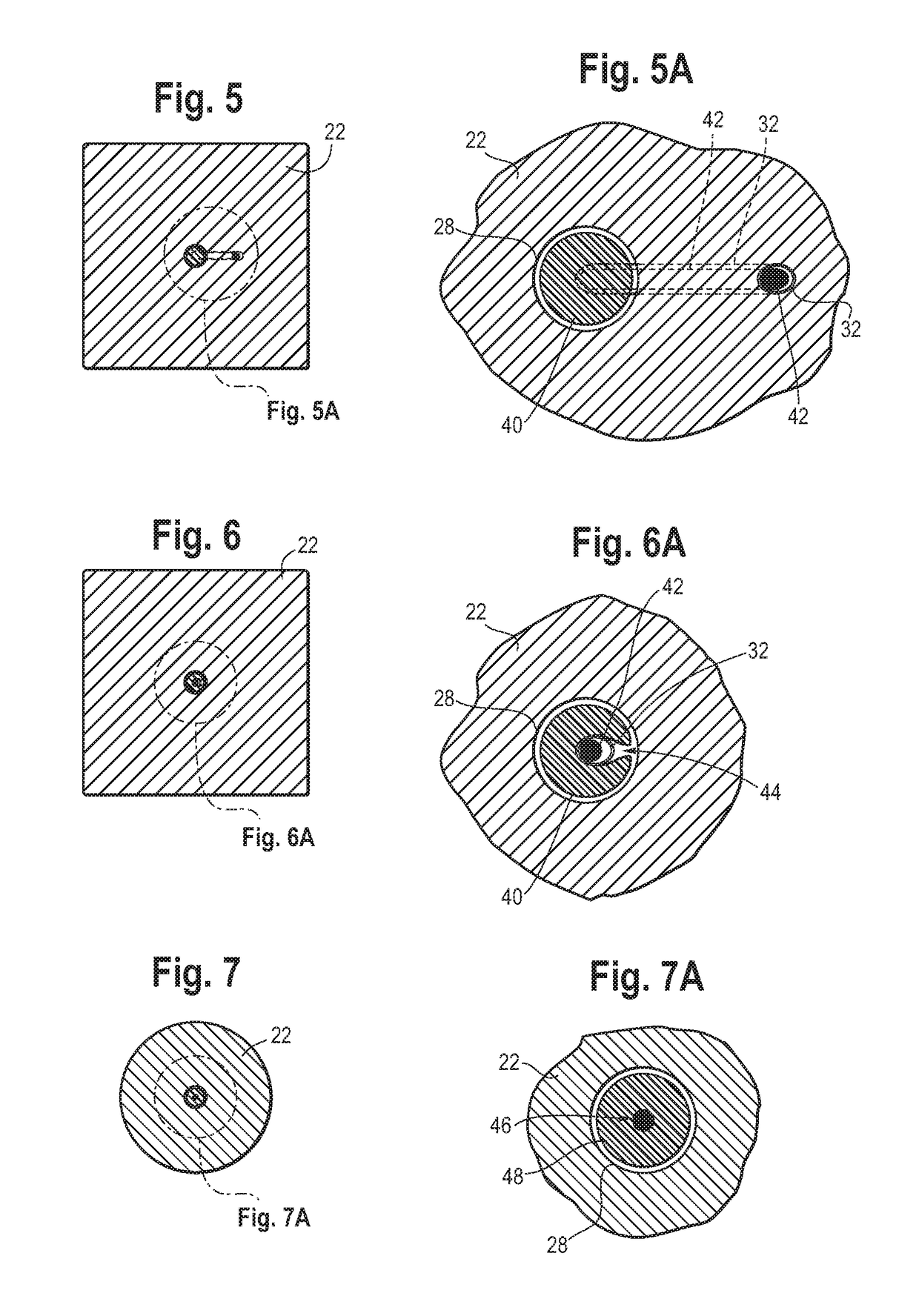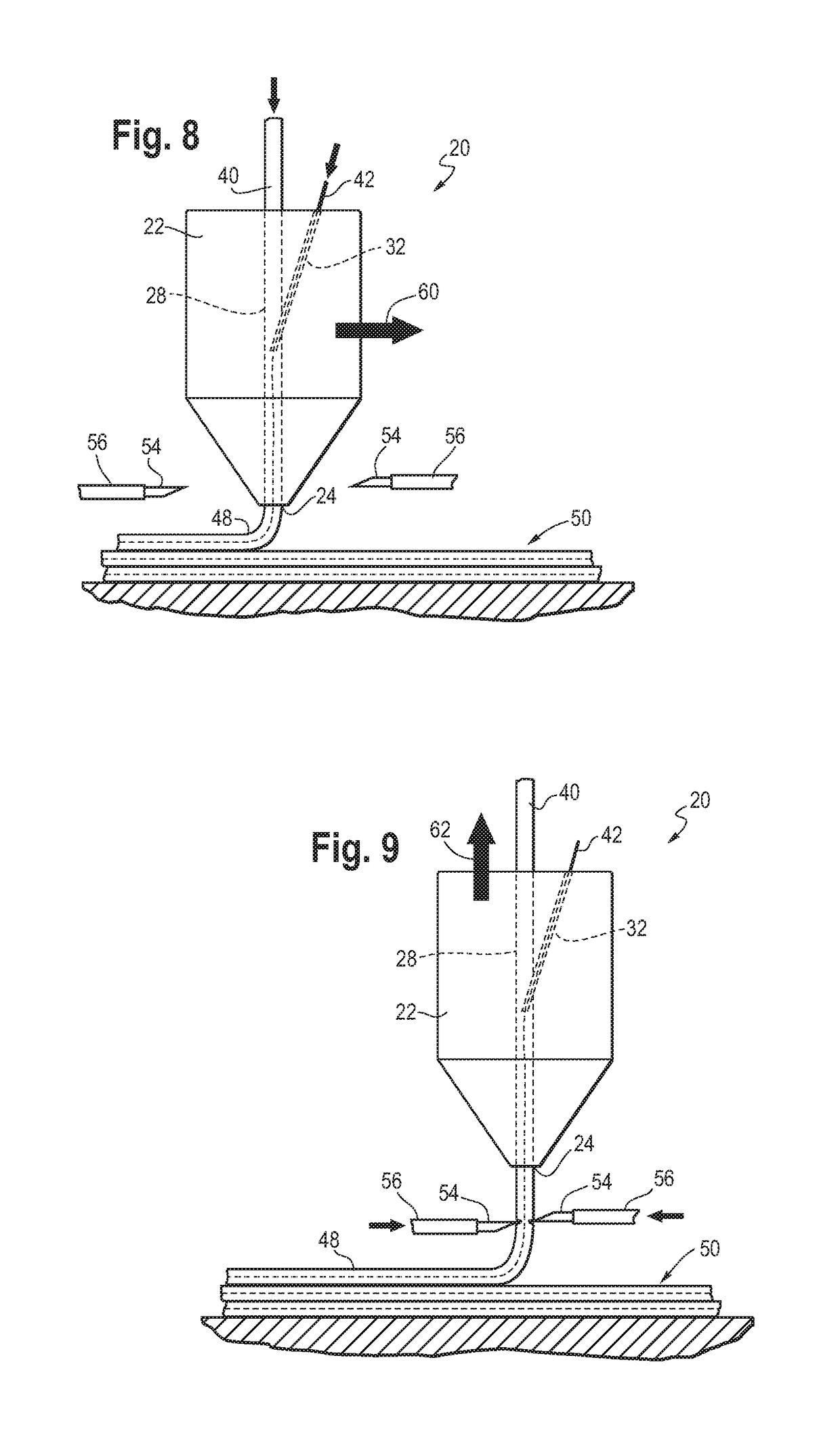Device and method for 3D printing with long-fiber reinforcement
a technology of 3d printing and long fibers, applied in the direction of additive manufacturing processes, manufacturing tools, and applying layer means, etc., can solve the problems of requiring immense hand labor to fabricate, expensive and time-consuming process, and thermoset resins,
- Summary
- Abstract
- Description
- Claims
- Application Information
AI Technical Summary
Benefits of technology
Problems solved by technology
Method used
Image
Examples
Embodiment Construction
[0036]If used and unless otherwise stated, the terms “upper,”“lower,”“front,”“back,”“over,”“under,” and similar such terms are not to be construed as limiting the invention to a particular orientation. Instead, these terms are used only on a relative basis.
[0037]FIG. 1 depicts a nozzle 20 for use in a 3D printing apparatus. Nozzle 20 has a nozzle body 22. Although representative outer shapes for nozzle 20 and nozzle body 22 are shown, one of ordinary skill in the art would understand that a variety of shapes, for example, a cylinder, could be used.
[0038]Nozzle body 22 includes an inlet 26 for receiving a filament to be used in 3D printing. In an embodiment, the filament is a thermoplastic filament, but as an alternative, a thermosetting resin or other similar polymer material could be used. The following discussion relates to the thermoplastic filament embodiment, modifications for using the invention with a thermosetting resin are discussed below. After entering filament inlet 26, ...
PUM
| Property | Measurement | Unit |
|---|---|---|
| melting point | aaaaa | aaaaa |
| angle | aaaaa | aaaaa |
| thermoplastic | aaaaa | aaaaa |
Abstract
Description
Claims
Application Information
 Login to View More
Login to View More - R&D
- Intellectual Property
- Life Sciences
- Materials
- Tech Scout
- Unparalleled Data Quality
- Higher Quality Content
- 60% Fewer Hallucinations
Browse by: Latest US Patents, China's latest patents, Technical Efficacy Thesaurus, Application Domain, Technology Topic, Popular Technical Reports.
© 2025 PatSnap. All rights reserved.Legal|Privacy policy|Modern Slavery Act Transparency Statement|Sitemap|About US| Contact US: help@patsnap.com



